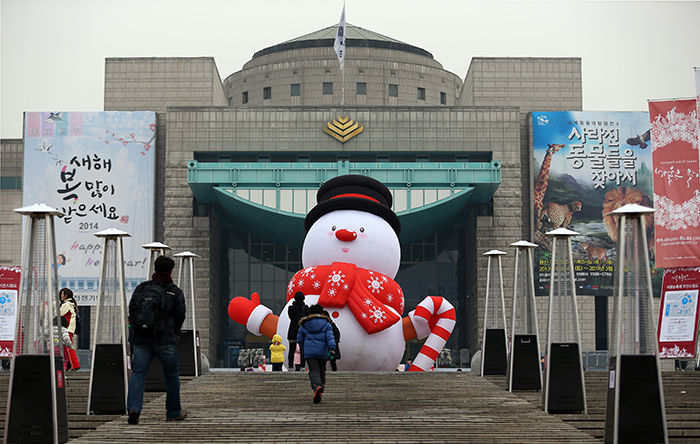
For parents with young children, the War Memorial of Korea is one of the best places to visit as it hosts a snow festival and interesting youth-oriented programs throughout the winter. (Photo: Jeon Han)
The New Year has begun. Here in Korea, winter gets into full swing in January, causing everyone, children and grown-ups alike, to button up their coats and dress for the cold.
Some students may spend most of their winter vacation at home because of the cold, but many organizations plan various winter-themed programs or events during the vacation, hoping to lure the kids out of the house. In Seoul, one of the best places for winter activities is the War Memorial of Korea, located in Yongsan-gu (district), central Seoul.
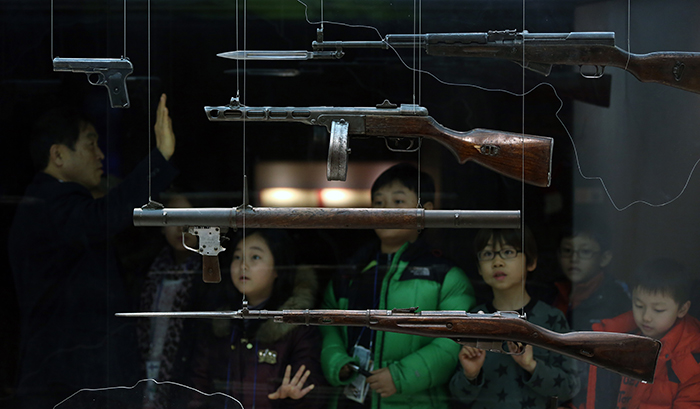
Children at the War Memorial of Korea on January 7 listen to a curator who explains about the weapons used by North Korean soldiers during the Korean War. (Photo: Jeon Han)
Opened since 1994, the War Memorial of Korea allows people to learn about Korean history through war-related displays. Approximately 9,000 cultural items are on display at the memorial. There are relics from as early as the Prehistoric Age, from the Three Kingdoms period-- Silla (57 B.C.- A.D. 935), Baekje (18 B.C.- A.D. 660) and Goguryeo (37 B.C.- A.D. 668)-- from the Goryeo (918-1392) and Joseon (1392-1910) dynasties and even from the Daehan Empire (1897-1910). The memorial houses remains from those who fought in the Korean War (1950-1953), outlines the activities of Korean troops dispatched overseas and predicts how the military will develop in the future. On the memorial grounds, people cannot only see war-related cultural items but also watch 3D movies of the F-15K fighter jet and experience a simulated shooting, particularly popular with young visitors.
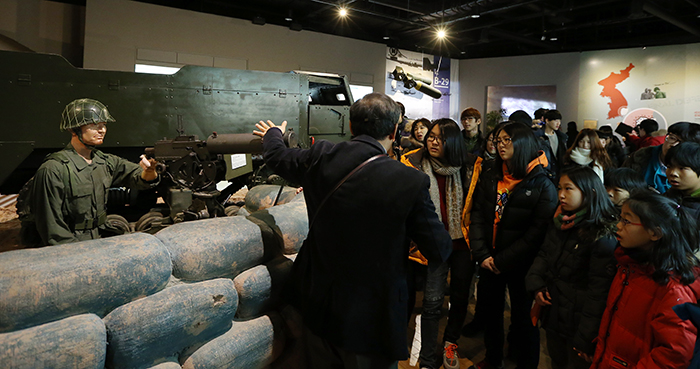
Students listen to an explanation about the weapons used during the Korean War while observing the diorama at the War Memorial of Korea. (Photo: Jeon Han)
The War Memorial of Korea teaches the importance of peace by showing the outcome of wars throughout Korean history. This year, the museum is also hosting some special winter events for children.
In the Peace Plaza, in front of the memorial, the “Seoul Snow Festival” is taking place until February 9. Children can play in the snow, enjoy sledding and experience some winter fishing. The festival grounds open at 10 a.m. and close at 6 p.m. on weekdays and 9 p.m. on Fridays and holidays. It is closed on Mondays.
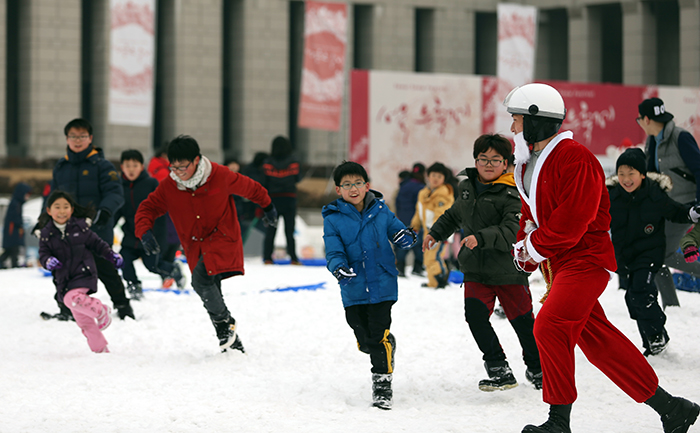
Children race through the snow in the Peace Plaza in front of the War Memorial of Korea. (Photo: Jeon Han)
More information on the memorial is available at its homepage (https://www.warmemo.or.kr/eng/main/main.jsp), with service in Korean, English, simplified Chinese and Japanese.
By Jeon Han, Yoon Sojung
Korea.net Staff Writers
hanjeon@korea.kr
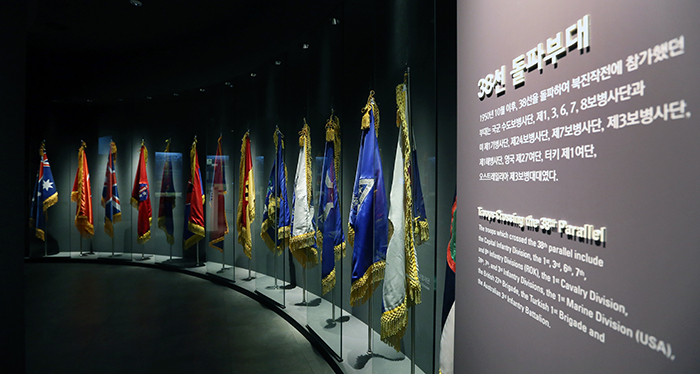
Remains of UN soldiers and a list of those who sacrificed their lives during the Korean War are on display at the War Memorial of Korea. This photo shows the flags of the military units that participated in the October 1950 “Plan for Advancement North” during which both Korean and UN soldiers advanced north of the 38th parallel. (Photo: Jeon Han)
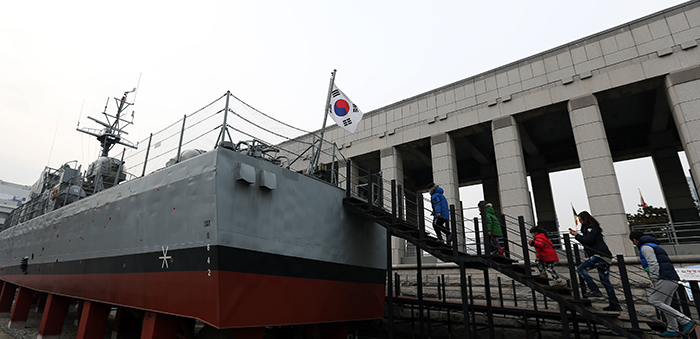
People can see life-sized fighter planes, tanks, self-propelled cannons, naval destroyers and other large military vehicles in the outdoor exhibition area. (Photo: Jeon Han)
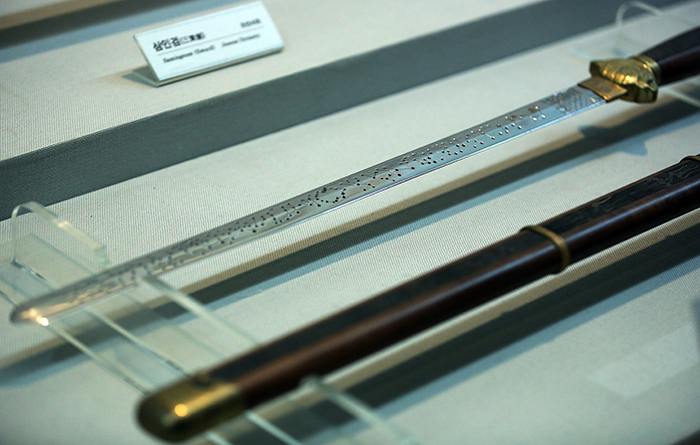
Sharpened swords used during the Joseon Dynasty are on display at the War Memorial of Korea. This razor-sharp sword is named Saingeom. Its name means “four tigers” as it was smelted during the hour of the tiger, between three and five a.m., on the day of the tiger, during the month of the tiger and in the year of the tiger. Tigers symbolize soldiers and military men. The blade is carved with constellations for decoration. Due to the timing, such blades were only able to be forged once every 12 years. This sword symbolizes the wielder’s authority and was used during ceremonial functions. (Photo: Jeon Han)